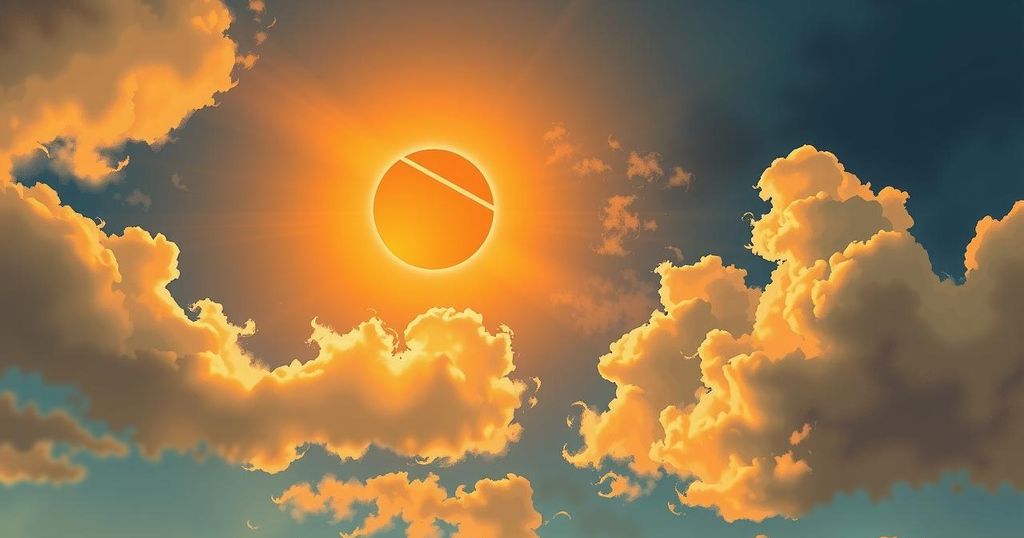March 29 Solar Eclipse: Visibility, Timing, and Safety Guidelines

On March 29, a partial solar eclipse will occur, primarily visible in North America, Europe, Africa, and parts of Asia. It will not be visible in India, but can be experienced via live streaming. The eclipse timings in Indian Standard Time are 2:20 PM to 6:13 PM. Proper safety measures must be adhered to when viewing the eclipse to prevent eye damage.
On March 29, a solar eclipse will occur, marking the first of the year. This celestial phenomenon happens when the Moon obstructs the Sun from the Earth’s perspective, resulting in either partial or complete darkness. This eclipse will only partially shadow the Sun, as the Moon’s central shadow will not reach Earth, thereby preventing a total eclipse. Only regions in North America, Europe, Africa, and parts of Asia will witness this event distinctly.
The solar eclipse will not be visible in India, as its visibility is limited to select regions. However, individuals in India can view the eclipse through live streams available on various online platforms, allowing them to experience the event remotely.
In local timings, the eclipse will begin at 2:20:43 PM IST, peak at 4:17:27 PM IST, and conclude at 6:13:45 PM IST, according to reports. Many observing locations, especially in the Americas, will experience the eclipse around sunrise, while areas in Europe and Africa will see it during mid-morning and early afternoon.
Safety precautions are critical when viewing a solar eclipse. Directly looking at the Sun can cause severe eye damage. To safely observe the eclipse, specialized solar viewing glasses or eclipse glasses must be used. Regular sunglasses do not suffice for protection. Additionally, optical devices like cameras, telescopes, and binoculars should never be used without proper solar filters, as these can damage the eyes due to concentrated sunlight rays.
The March 29 solar eclipse will be a partial eclipse predominantly visible in parts of North America, Europe, Africa, and northern Asia, but not in India. Observers in India can still tune in via live streams. It’s essential to follow safety measures, employing appropriate solar viewing glasses and avoiding regular sunglasses or direct viewing to protect one’s eyesight during the eclipse.
Original Source: www.hindustantimes.com






